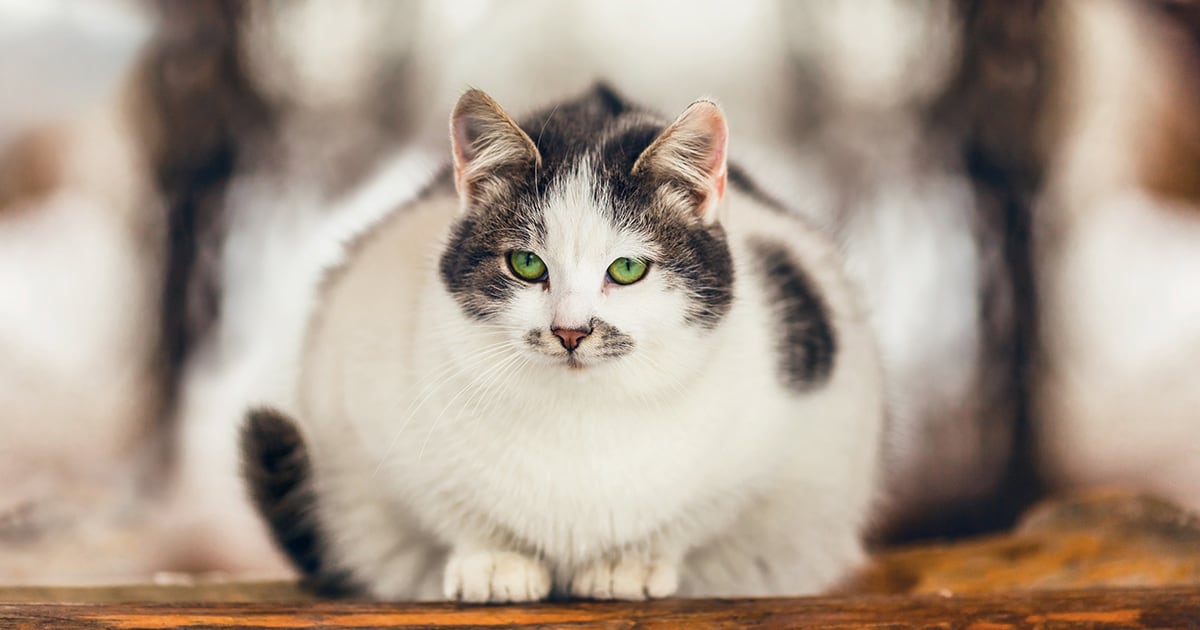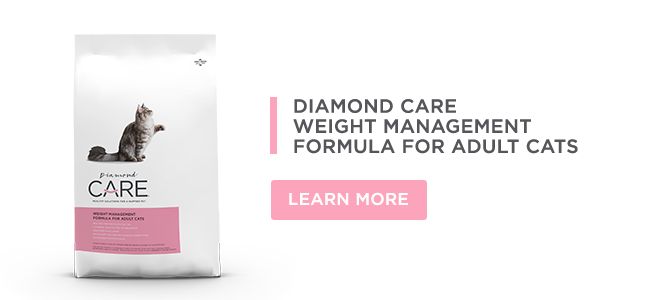Let’s consider the jolly “fat cat” for a moment. We tend to think of fat tissue as innocuous, nothing more than a layer of extra padding that stores energy or might lend a little warmth in the winter. But scientists are learning that fat tissue is biologically active, secreting hormones that can cause and exacerbate inflammation, and contribute to other health conditions in the feline body.
Obesity in cats
In cats, obesity is often linked to diabetes, fatty liver disease, digestive disorders, skin conditions and feline lower urinary tract disease.1 It’s suspected that added weight is also associated with osteoarthritis and could potentially shorten a cat’s lifespan, as in dogs, but more research is needed.
Scientists are now learning the role fat tissue plays in many of those conditions. In fact, fat tissue secretes hormones such as leptin and adiponectin as well as inflammatory mediators, which are collectively called adipokines. These substances communicate with the brain and other tissues, and can throw off normal body functions, leading to inflammation and various disorders.
Leptin and adiponectin
Normally, leptin is produced in fat cells and helps suppress appetite and promote energy metabolism. When dogs, cats and people become obese, they tend to have higher levels of leptin in their blood, because the brain becomes resistant to it. In turn, the animal loses the benefits of the hormone, so it wants to eat more at the same time that its metabolism slows down. All of this makes it harder to lose weight.
One of adiponectin’s many functions is to help control blood sugar (glucose) metabolism by making cells more sensitive to insulin, a hormone that helps cells “open the door” for glucose. As animals gain weight, levels of adiponectin drop, leading cells to be more resistant to insulin. As a result, the body can’t get the glucose it needs for energy. Low levels of adiponectin are consistently found in obese cats.2 This may explain why insulin resistance and diabetes are common findings in overweight cats.
These and other adipokines can impact immune system function, eventually leading to chronic, low-grade inflammation. That’s why fat tissue isn’t as harmless as we may think. As pets gain weight, they have more fat cells pumping out more potentially harmful compounds.
The good news is that adipokines may return to more normal levels after weight loss.3 In turn, that helps reduce inflammation and helps bring other body functions back into the normal range. To help cats lead healthier lives, scientists will continue to learn more about the role of adipokines in overweight animals.
RELATED POST: CAT DIETS: WHEN THE SCALE WON’T BUDGE
References
- German AJ, Martin L. Feline obesity: Epidemiology, pathophysiology and management. Encyclopedia of Feline Clinical Nutrition. Ithaca, NY: Royal Canin, 2008:3–49.
- Mazaki-Tovi M, Abood SK, Schenck PA. Effect of omega-3 fatty acids on serum concentrations of adipokines in healthy cats. Am J Vet Res 2011; 72(9):1256–1259.
- Tvarijonaviciute A, Tecles F, Martinez-Subiela S, Ceron JJ. Effect of weight loss on inflammatory biomarkers in obese dogs. Vet J 2012; 193:570–572.








